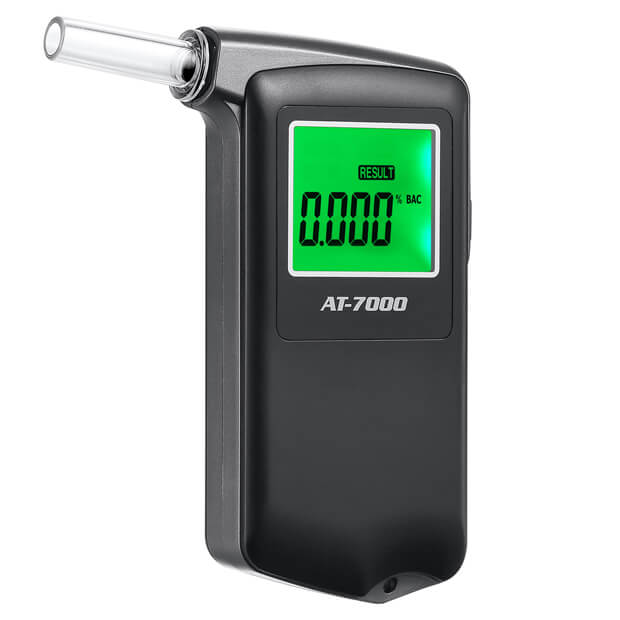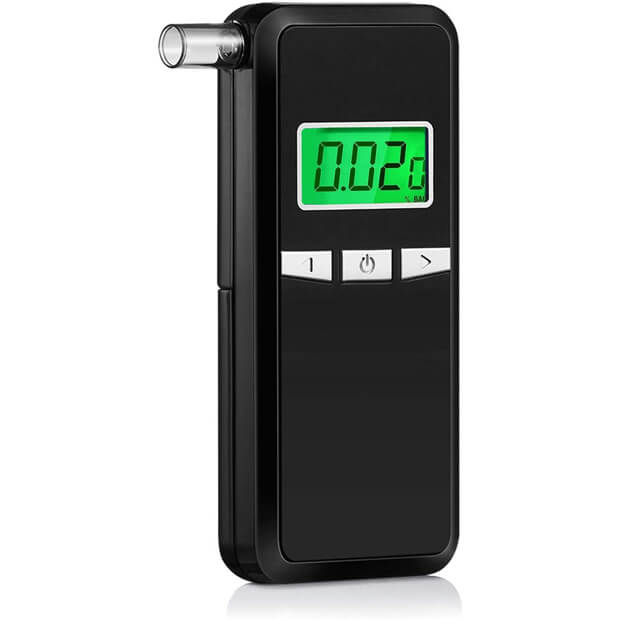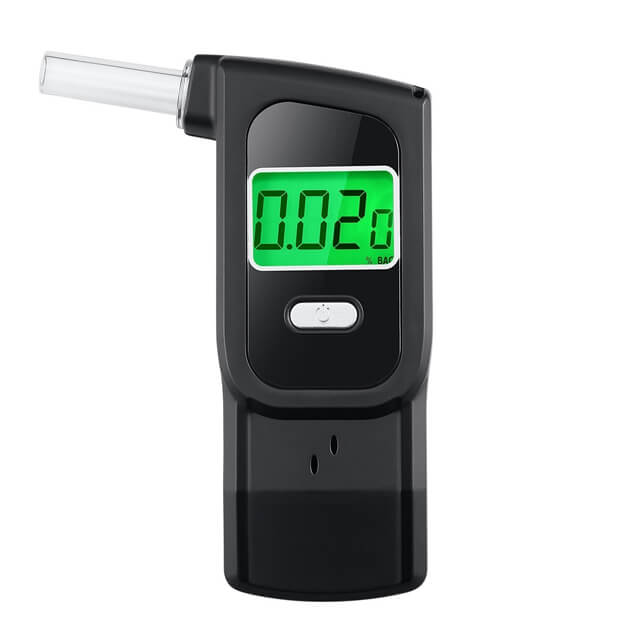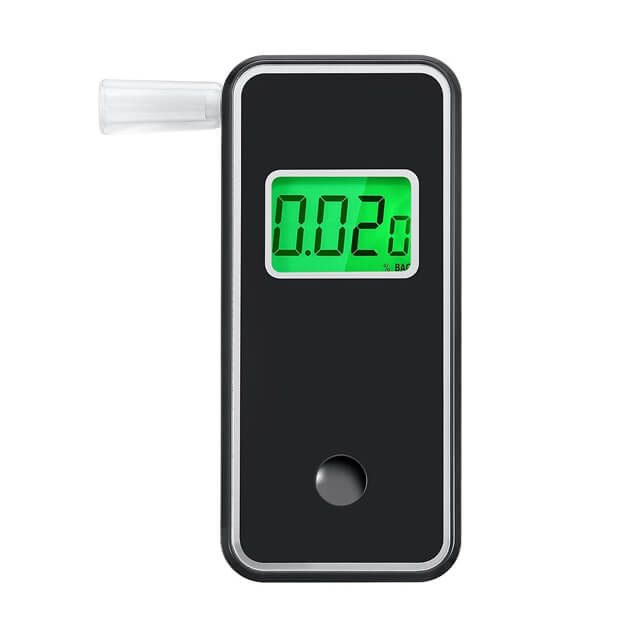Semiconductor Alcohol Tester

Breathalyzer based on the technology of semiconductor sensors is the most common solution for drivers who want to be sure that they can safely drive a car.
Semiconductor breathalyzers are good, affordable options for personal use.
- 1. Customization: We can support OEM & ODM.
- 2. Certification: All the models with CE, RoHs and FCC.
ODM/OEM Service
Exterior Design
Staffed with in-house specialized designers, your style concepts will be turned into reality. Any molding demand can be fulfilled.

Logo and Label
Your own logo can be laser printed on the products. Also brandedlabel stickers are available.

Package
The color box, inner box,and outer cartons canbe customized according to your artwork. Anybranded packages are accessible.

Semiconductor Alcohol Sensor
Semiconductor Alcohol Sensor
The term "alcohol" is commonly used to refer to the chemical ethanol. We consume ethanol when we drink wine or beer, and we quantify blood ethanol content when we measure blood alcohol concentration (BAC).
Breathalyzers are devices that are used to test a person for alcohol and provide accurate results. Breath analyzers have an anode (negatively charged electrode) and a cathode (positively charged electrode). When you blow into a breathalyzer, the ethanol in your breath interacts with water from the air at the anode and is oxidized to produce acetic acid.
Chemistry of Alcohol Testers
When you drink alcohol, it enters your stomach and small intestine. It enters your bloodstream and travels throughout your body, including to your brain and lungs. You exhale when you breathe.
A breath test measures the amount of alcohol in your exhaled air. The breathalyzer uses this measurement to assess the level of alcohol in your blood.
A breathalyzer may fail to accurately measure blood alcohol content in a few scenarios. Individuals with higher-than-normal acetone levels in their breath may be mistaken for ethanol. Diabetics, those on fasting diets, and people following a ketogenic diet are all examples of this. There are a few other molecules that could interfere with a breathalyzer's chemistry, but none of them are likely to be in your bloodstream.
These tests are used by national institutes such as the police to identify whether or not a driver is inebriated. In comparison to men, women drivers are more likely to be charged with driving while inebriated. By detecting the amount of alcohol in exhaled breath, alcohol breath testers can determine the amount of alcohol in a person's blood, also known as blood alcohol concentration (BAC).
Semiconductor Breathalyzers
A semiconductor sensor uses a tin-oxide material to electronically oxidize alcohol. The gadget performs a redox reaction by combining alcohol, water, and acetic acid, and the current generated is then measured. The amount of alcohol being reacted in the individual's breath is indicated by the measured current.
If there are no other volatile chemicals in the circulation interfering with the determination of BAC level and the breath temperature is steady, semiconductor sensors are accurate. This means that semiconductor sensors are extremely sensitive to chemicals other than alcohol, such as mouthwash. As a result, it is recommended that you wait 20 minutes after the last time you drank alcohol or ate anything else before using this gadget.
Semiconductor sensor units are relatively inexpensive and are very popular as personal breathalyzers and for conducting professional low-volume testing. They usually read up to 2 decimal places and have an accuracy range of +/-0.01%BAC. If maintained and calibrated regularly after every six months, these breathalyzers can perform well and will give accurate results.
Overall, if precision isn't critical, semiconductor breathalyzers are excellent for personal use.
When exposed to breath alcohol, semiconductor sensors, measure a change in their characteristic impedance. The temperature of the sensor is raised to 300 degrees Celsius. The tester determines the degree of alcohol oxidation on the sensor's surface. This difference in surface impedance corresponds to different scales of alcohol test results.
The semiconductor sensors are not only sensitive to ethanol vapors, but also to other gases closely related to ethanol, such as methane and other organic gases like acetone in human breath. However alcohol is the only major gas in a normal person's breath. Alcohol is frequently blamed for a reading of.03 or above. If the subject has not drunk alcohol in the previous 12 hours, a value of.01 percent to.02 percent could be attributed to miscellaneous gas in their breath. As a result, semiconductor sensor testers are often unable to distinguish between very low levels of alcohol and no alcohol at all.
Acetone is one of the gases that can be discovered in higher concentrations in the breath of people who are dieting or diabetic. Extremely high quantities of acetone can provide a significant reading on a semiconductor sensor in rare cases.
Because semiconductor sensors are relatively affordable, they have been used in a wide range of testing. It is conceivable to make a semiconductor-based alcohol tester that responds to alcohol in some way for a reasonable price. The more advanced and expensive breathalyzers are capable of producing near-evidential quality test results by controlling some of the conditions that can distort findings, such as temperature and humidity.
Working of Semiconductor Alcohol Testers
- When someone consumes alcohol, it enters the stomach and small intestine, where it is promptly absorbed into the bloodstream.
- A person's blood alcohol content (BAC) can be determined within minutes of consuming an alcoholic beverage. About an hour after drinking, your blood alcohol content (BAC) will be at its maximum.
- The liver breaks down around 90% of the alcohol taken; the rest is excreted through urine and breath.
- The breath-testing gadget turns the amount of alcohol in a person's breath into a BAC.
- An adult driver's blood alcohol concentration (BAC) cannot exceed 0.08 percent nearly anywhere in the world. For drivers under the age of 21, all states have "zero tolerance" regulations, which make driving with any detectable amount of alcohol unlawful.
- Many factors influence how quickly and how long a person's breath alcohol concentration rises, including the person's weight, gender, how much alcohol they've consumed, and when they last ate food.
- This type of test can only be used with alcohol. Scientists are working on a method to evaluate marijuana impairment in a similar way.
- Evidential use of breathalyzers shows that, these can be serve as accurate alcohol testers.



